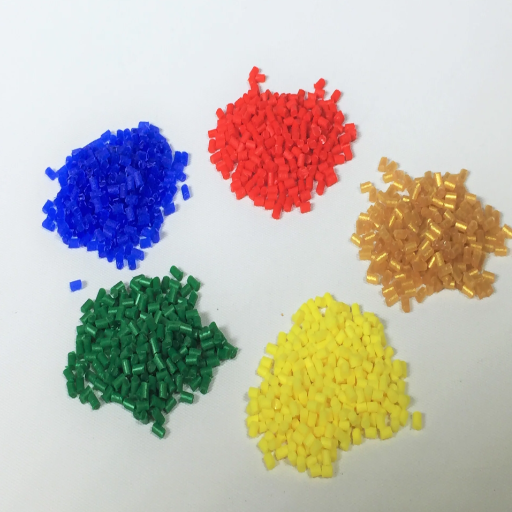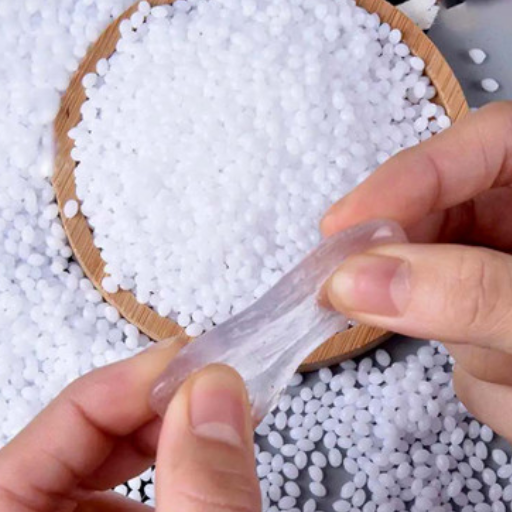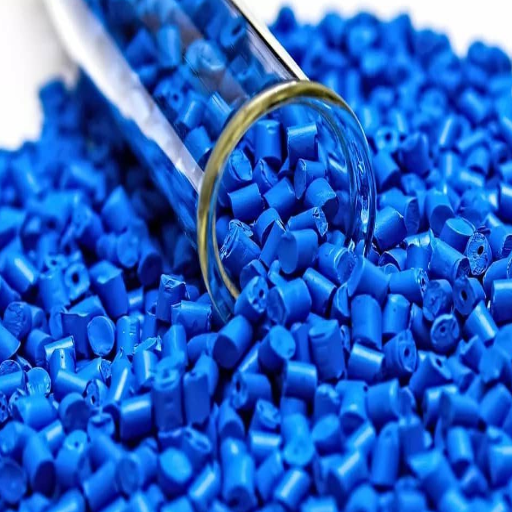Acrylonitrile Butadiene Styrene, commonly referred to as ABS, is a popular thermoplastic material that comes in the form of pellets that are ever-present in various industries that utilize injection molding processes. This is due to its dazzling characteristics, such as excellent impact force resistance, high rigidity, and an effortless, bearable process, thus enabling engineers and developers to fabricate intricate, high-quality parts. This article seeks to elucidate the understanding of the physicochemical properties, advantages, and the most common applications of ABS plastic pellets in injection molding. So, if you are a seasoned expert or a novice, this guide will help you comprehend why ABS has stood the test of time when manufacturing robust and efficient plastic parts.
What are ABS pellets, and why are they used in injection molding?
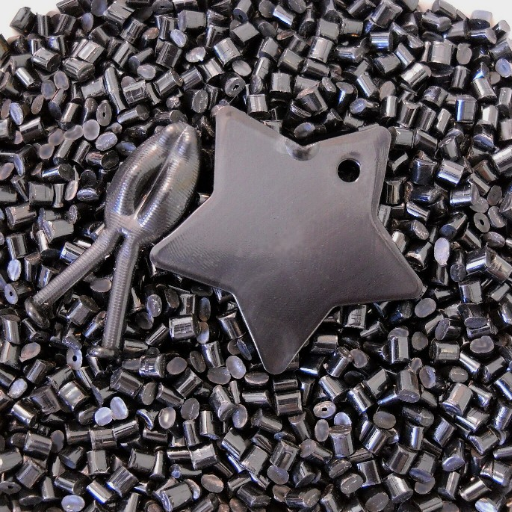
Acrylonitrile Butadiene Styrene(A BS) is a lightweight, structured, rigid thermoplastic with strong molding properties. Various plastic manufacturers prefer this molding as it creates a valuable balance of strength elements and thermal stability. It comprises three main monomers: acrylonitrile, butadiene, and styrene. When these materials are combined, they result in a sub-material that is stable dimensionally, enabling the manufacture of elements of high accuracy and durability. These materials are robust and versatile, allowing manufacturers to fabricate specific components. The underlying reason that these materials are widely adopted in the injection molding process stems from their high stability and relatively low price.
Understanding ABS plastic and its properties
Acrylonitrile Butadiene Styrene( ABS) comprises three main elements: butadiene, acrylonitrile, and styrene. These three former elements individually have the following vinculum characteristics. Butadiene has rubber, which is relatively rigid, acrylonitrile chemical, heat resistive properties, and styrene, which has impressive shearing strength. It is ideal for any industrial needs as it remains unaffected by heat corrosion and various chemical reactions. Due to its structural strength and rigidity, it competes several times with other thermoplastics.
Besides being robust, ABS is also lightweight and easily molded, maintaining good dimensional accuracy during manufacturing processes such as injection molding and 3D Printing. It is particularly well-suited for use in complex geometries in applications like automotive, electronic, and household appliances due to its precision in design. It also has good surface characteristics, which makes it suitable for mechanical bonding and finishing processes such as painting, chroming, and adhesive bonding. The material is still most preferred in industries where lower cost, greater strength, and superior performance are desirable.
Benefits of using ABS pellets in injection molding
ABS pellets are the most suitable materials for injection molding. These materials can be used to make components in several industries, all thanks to an outstanding combination of impact resistance and toughness. ABS offers higher dimensional stability, which reduces wrinkling and guarantees that accuracy is achieved in complex aspects during manufacturing processes. Moreover, the low melting point allows the material to be molded faster, which increases efficiency. ABS pellets are also versatile as they undergo secondary processes like painting, electroplating, and bonding, which improve the product’s appearance and usability. All these traits, in general, make ABS a very suitable material for inexpensive and high-performing production.
Typical applications of ABS in molded products
ABS has a wide application throughout several industries due to its strength, toughness, and ability to be used in multiple ways. In the automotive industry, for instance, it is usually used to produce dashboards, wheel covers, and interior trim parts. Its impact-resistant properties justify such applications for the material. Likewise, ABS is often utilized when manufacturing consumer products, including cases for laptops, monitors, and more, as it is very light and has a smooth, adaptable surface. Moreover, it also has an essential mission in producing household goods, particularly kitchen devices, storage devices, and toys, such as LEGO bricks, characterized by their good formability and appealing appearance. These applications define the practical relevance of the material in industrial and everyday living.
How do you choose the right ABS pellets for your injection molding project?
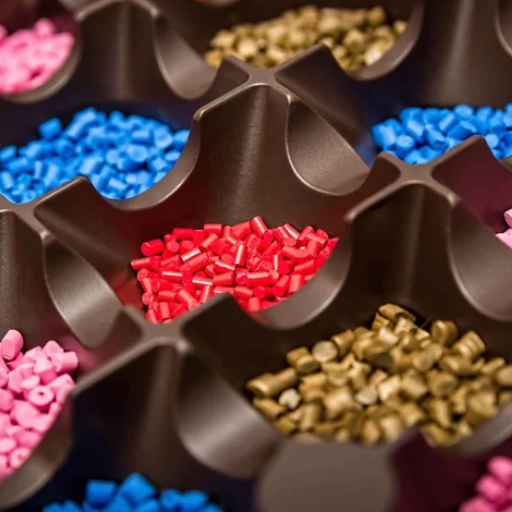
There are a few factors to consider regarding the pellets for any injection molding project. One of the first factors to assess is the mechanical properties of the ABS, such as its impact resistance, tensile strength, and flexibility to suit the functional parameters of the product in question. Once that is done, the second thing to consider is the material’s thermal properties, precisely the heat distortion temperature, and whether or not the material can stand the molding and the service conditions. Furthermore, it is essential to consider the range of colors and the types of finishes available on the surface of the ABS pellets, especially if the final product has a certain visual appeal. Moreover, the flow behavior and shrinkage tendency must be considered, as they contribute to the accuracy and stability of the part. Finally, the necessary guidelines and regulatory and environmental policies for the related industry or products are inscribed.
Factors to consider when selecting ABS plastic raw material
In selecting the ABS plastic raw materials, I consider particular factors so that such materials are applicable and suitable for my project. First, I think the impact resistance and the material’s tensile strength as such properties are essential for many applications that are exposed to stress. Second, I check the heat deflection temperature and operating temperature range to ensure the material can tolerate the specified working conditions. Third, I look at the grade of ABS. I consider general-purpose, flame-retarded, or high-heat zones and check them against the specifications of my project. Besides, I think processing parameters, including melt flow index, enable efficient molding with accurate dimensions. Finally, I check that the material is certified and complies with the industry requirements to meet the safety and environmental protection requirements. All these steps cumulatively make me focus my material selection operations with better accuracy and dependability.
Comparing different grades of ABS resin
When analyzing select grades of ABS (Acrylonitrile Butadiene Styrene), it is crucial to consider their characteristics in relation to the expectations of specific applications. The common ABS grades have reasonable mechanical strength, such as impact and stiffness, and thus can be used in typical areas, including household items and automotive interiors. On the other hand, high-impact ABS grades with increased butadiene content are suitable for products that need high toughness, such as protective casings and helmets. There are also flame-retardant grades of ABS for use in electrical and electronic industries by fire safety requirements.
High-heat ABS grades are more thermally resistant and, therefore, applicable in areas where the temperature is expected to be high, including the automotive under-the-hood region. Furthermore, clear or colored ABS types are features of finished consumer products that improve the product’s look without changing performance. The critical parameters for proper grade selection, tensile strength, melt flow rate, and applicable standards, such as the UL 94 standard for flammability and the RoHS standard for the environmental aspects, are paramount. A careful understanding of these properties will enable the selection of a suitable grade of ABS resin for the intended application, as well as its performance and regulatory requirements.
Black vs. white ABS: Color options and their impact
Selecting between black and white ABS depends on the application’s particular needs. For instance, black is more suited for outdoor applications due to its superior UV resistance characteristic. The darker pigment also helps to hide surface imperfections better, resulting in a more pleasing appearance for the final product. However, in many cases, white ABS is more desirable for parts that need bright reflective surfaces or when the parts are intended to be painted or coated later. Either color provides ABS with the same essential mechanical characteristics, but the most appropriate may depend on environmental conditions and aesthetic considerations.
What are the best practices for using ABS pellets in injection molding?
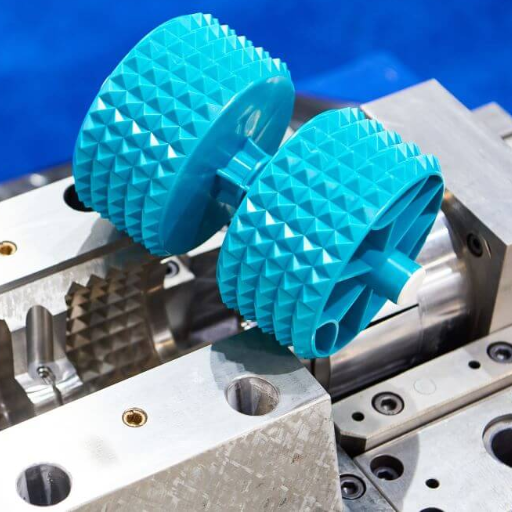
When utilizing ABS pellets for injection molding, a few practices can be observed that would yield better results. My first concern is to ensure that the pellets are stored in a dry place and that the amount of moisture absorbed is kept low because such factors can contribute to defects in the pellets, such as surface blistering. It is recommended to pre-dry the ABS pellets and heat them to 80 to 90 degrees Celsius for a duration ranging from 2 to 4 hours, depending on the manufacturer’s instructions. Then, a suitable barrel temperature ranging from 210°C to 250°C with a mold temperature averaging 50°C to 80°C caters to enough cooling and preserves the dimensional integrity of the end product. Moreover, adjusting the injection speed and injection pressure assists in minimizing stress marks while ensuring that every part is filled correctly. Last but not least, contamination during production runs is minimized by routinely servicing machines and molds, thus averting tooling to compete for the quality of the production processes.
Optimizing the injection molding process for ABS
The molding of a product is sometimes subject to challenges, and when these challenges are not adjusted for, molding takes a toll on the product being manufactured. Warpage and shrinking during molding due to various factors, including failures with the Mold design, are issues that must be tackled carefully and precisely. Applying appropriate mold design principles that include operating within a thickness range of sixty walls up to seventy degrees ambient and uniformly heating the surface reduces cooling cycles and helps eradicate deformations.
Another common concern is burn marks or black specks, which result from a high-temperature barrel or the overextended amount of time the material spends in the barrel. To reduce this, the barrel temperature recommendation of 210°C to 250°C and injection speed and pressure utilization to improve the flow rate should reduce the unfortunate thermal degradation.
Lastly, for surface defects such as weld lines or sink marks, injection pressure, and packing pressure optimization must be the utmost priority. For voids formed post-material injection, if packing pressure is increased, the increase in the pressure can improve the surface quality. Besides, timely checking and servicing the mold vents will minimize the risk of unfilled molds since the appropriate quantity of air will be released from the molds. Therefore, with such adjustments in place, the injection molding process for ABS should deliver frustration-free and perfect results every single time.
Tips for achieving superior impact resistance in molded parts
To promote superior impact resistance in molded parts, I pay great attention to the material selection, processing parameters, and part design. For instance, impact-grade resins like ABS and polycarbonate blends are critical because they are designed to withstand and absorb significant energy during impact. These factors, together with the control of melt temperature, injection speed, and cool-down rate, will determine the extent of polymer chain alignment and the internal stresses experienced. Furthermore, I incorporate rounded ribs, corners, and other features while maintaining a uniform wall thickness to enhance part strength systematically. All in all, if employed collectively, these strategies will improve the durability and functional capabilities of the parts.
Troubleshooting common issues with ABS injection molding
The various faults that come with ABS injection molding, I pay attention to drying and melting temperature, and so on. When it is not dried correctly, water is retained in the resin, which leads to ingredients that can include bubbles or cause splay. The drying time should be 2-4 hours, in which case the temperature will be 80 degrees Celsius or 176 degrees Fahrenheit for the ABS. To ensure that any burn marks or degraded material is never the case, a check on the injection speeds along with barrel temperatures is made to prevent constant overheating of the material. Furthermore, Unintentional distortions or sizes that are not precise can broadly be controlled when the rate of cooling throughout the mold is increased while adjusting its size and shape to the desired level. Cleaning the mold consistently also helps eliminate shortcomings, such as the gamut and fillet of the parts, which are found to be either worn out or dirty, affecting the output of the part being molded.
Where can I find reliable suppliers of ABS pellets for injection molding?
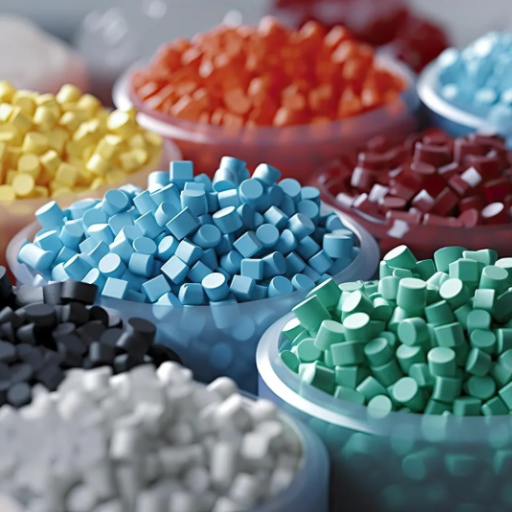
To purchase ABS pellets, search through credible industrial material distributors such as RTP Company or INEOS Styrolution. Plastics.com and Alibaba also cover many suppliers for ABS pellets, as you can order online. Do not forget to check the materials certifications, customer reviews, and the supplier’s logistical capabilities for those ordering for the first time.
Top manufacturers and factories for ABS plastic raw material
When discussing the top manufacturers and factories for ABS plastic raw materials, it is crucial to consider globally renowned companies. LG Chem is a leading producer that provides high-quality ABS resins with superior performance. Sabic, another major player, offers a diverse range of ABS solutions tailored for various industries and backed by extensive technical support. Lastly, Chi Mei Corporation, headquartered in Taiwan, is a prominent supplier known for its advanced production capabilities and consistent material quality. These manufacturers are highly regarded for their reliability and innovation in delivering ABS raw materials.
Comparing prices and quality on Amazon.com and Alibaba.com
While researching the cost and quality of ABS plastic raw materials on Amazon.com and Alibaba.com, I discovered that the two differ significantly. Most of the time, Amazon.com has the luxury of processing and shipping orders quickly, but the price per unit is relatively high, especially for bulk orders. Many items of these types tend to be reasonably priced and make due as they come from trusted brand sources like Sabic and LG Chem. However, on Alibaba.com, prices are almost directly inverse to that of Amazon, with the only primary concern being the seller’s sourcing as it has a much lower cost but a high variance in quality and requirements. If the situation doesn’t permit my company to make big purchases and requires them to deliver fast, then Amazon is my company’s preferred website. In contrast, if there is a large-scale project, then Alibaba is ideal as long as a vetted supplier is used.
Factors to consider when choosing an ABS pellet supplier
When using an ABS pellet supplier, I seek out and believe a few key details that will help me ensure that I purchase a reliable resource. To begin with, I am looking out for suppliers with a proven background as a manufacturer or under a specific brand; this way, I can streamline the supply chain by minimizing risk in controlling the properties of particular materials that will be processed. The second point in that instance will deal with specifying the time of the project and which supplier will get me the goods quicker; Amazon, for example, has an extensive catalog with an efficient supplier of materials or Alibaba for large ventures and verified ones. I have a few ways to analyze my supplier qualitatively, from chasing customer reviews to the detailed evidence of the supplier’s certifications. This way, I can fill the sensibility gap before buying.
How does ABS compare to other thermoplastics for injection molding?
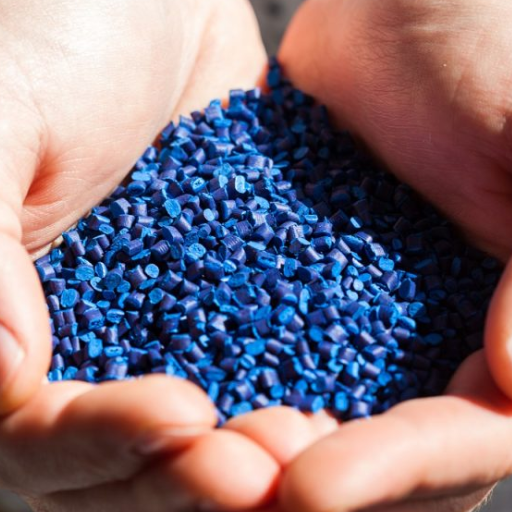
Among all thermoplastics suitable for injection molding, ABS (Acrylonitrile Butadiene Styrene) is unmatched, as it offers a good balance of mechanical properties, toughness, and heat resistance. ABS has the advantage over certain materials, such as polypropylene, in that it has better impact resistance and rigidity, which makes it suitable for use where durability is of concern. Polycarbonate is cheaper to produce and easier to work with, although its heat resistance is lower than that of polycarbonate. Its good surface finish, abrasion resistance, and secondary processes such as painting or plating make it very attractive compared to other thermoplastics in functional and aesthetic applications.
ABS vs. other common injection molding materials
Depending on the application, specific properties can make ABS preferable, such as its low cost, high impact strength, and rigid properties. While Polypropylene isn’t as cost-effective as ABS, it has better chemical resistance and flexibility than ABS, which has high mechanical strength and rigid properties. Indeed, ABS isn’t the most heat-proof material out there, yet when compared to polycarbonate, it’s easier to mold and much more affordable. In addition, ABS is more suitable for applications that need some functionality and aesthetics, as it can be easily painted or plated. Therefore, the choice highly relies on the application’s requirements, whether it is weather resilience, mechanical resilience, or thermal resistance.
Advantages of ABS in automotive applications
ABS has many benefits regarding its applications in the automotive industry. With its high impact resistance and toughness, it is recommended for many applications, such as dashboards, trim panels, and other interior fittings, which are essential to use. ABS has a low weight, increasing fuel consumption efficiency as it reduces vehicle weight. Moreover, it does not compromise any structures. It is easy to mold such materials, so complex shapes can be manufactured for various requirements or design purposes. In addition, ABS is easily paintable or plateable, providing high-quality layers to the basics and improving the overall look of the vehicle’s external and internal parts. These attributes make ABS suitable to be selected from a wide range of materials in modern automotive manufacturing.
When to choose ABS over other plastic resins
If the aim of the product is the optimum combination of strength and versatility within reasonable cost limits, then ABS is an ideal choice. It can be best used in those areas that are required to withstand considerable forces, such as automotive components, consumer electronic housings, or safety gear. It has better cutting and shaping properties and surface quality than other thermoplastics like polycarbonate or PVC. Moreover, ABS is preferred when the product structure has high requirements regarding thermal stability and repeated mechanical loads in various directions. These characteristics allow for the painting or plating of the parts, making ABS most advantageous to industries that require appealing and functional parts.
Can ABS pellets be used for other manufacturing processes besides injection molding?
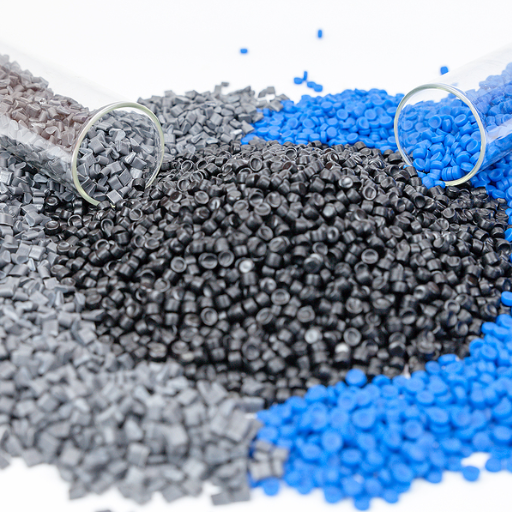
Injection Moulding isn’t the only manufacturing process that uses ABS pellets. Other methods include extrusion, where ABS fabricates pipes, profiles, and sheets, and thermoforming, which aids in fabricating bigger and lighter components. ABS can also be used in 3D printing in filament form for prototyping and custom manufacturing purposes. This broad application range can be attributed to its high thermal stability and ease of processing.
Using ABS in extrusion and 3D printing
When used with extrusion processes, acrylonitrile butadiene styrene has some notable advantages. One is that it assures the durability of profiles, sheets, and tubing because it is highly impact-resistant and, therefore, useful in molding. Another is that ABS has good dimensional stability, essential in achieving high accuracy in the final extruded products. Applications span several automotive components and construction materials where these attributes are required.
Benefits of ABS in 3D Printing
ABS filament is a popular material in 3D printing processes and is appreciated mainly because of its strength and flexibility in post-processing. This material can also tolerate heat, making it perfect for creating functional prototypes and end-use parts. ABS is also easy to use for intricate designs or structures since it can be sanded, drilled, or painted after printing. The only trade-off with plastics is that they have a high melting point, meaning that a heated bed is necessary for the material to print without deforming. After ensuring these aspects, high-end output can be achieved for aerospace, education, and consumer goods applications.
Adapting ABS pellets for different plastic processing methods
While working with ABS pellets to produce parts using different methods, such as extrusion and injection molding, I consider the material characteristics required for each process. For injection molding for sourcing, I select the melt flow index and the requisite temperature so that the melt flows precisely to the required maximum dimensions. For extrusion, I believe the melting should be via thermal stability to produce good-quality melts, sheets, or profiles. What is also essential when extruding ABS for 3D printing filaments is the pellets’ size and the drying conditions to control the amount of moisture so that tolerable minimum defects aren’t produced. These variables enhance ABS’s usability for different functions.
References
Acrylonitrile butadiene styrene
Frequently Asked Questions (FAQ)
Q: What are ABS plastic pellets, and what are they used for?
A: ABS plastic pellets, or acrylonitrile butadiene styrene granules, are a thermoplastic polymer used primarily in injection molding applications. These pellets are melted and injected into molds to create durable plastic products with excellent impact and chemical resistance.
Q: Are ABS pellets available in different colors, such as black ABS or white color ABS?
A: Yes, ABS pellets are available in various colors, including black and white. Additionally, color masterbatches can be added to create custom colors for specific applications. Black is particularly popular due to its versatility and ability to hide imperfections.
Q: What are the advantages of using high-flow ABS for injection molding?
A: High-flow ABS offers several benefits for injection molding, including easier processing, faster cycle times, and the ability to fill complex or thin-walled molds more effectively. This type of ABS is ideal for intricate parts or high-volume production runs on injection molding machines.
Q: Can ABS plastic pellets be used for other manufacturing processes besides injection molding?
A: While ABS pellets are primarily designed for injection molding applications, they can also be used in other processes, such as blow molding and extrusion. However, the specific grade of ABS should be chosen based on the intended manufacturing method to ensure optimal results.
Q: What is the difference between virgin plastic raw material and recycled ABS pellets?
A: Virgin plastic raw material refers to newly manufactured ABS pellets that have never been processed. These pellets typically offer the highest quality and consistency. Recycled ABS pellets, on the other hand, are made from reprocessed plastic waste. While more environmentally friendly, recycled pellets may have slightly different properties than virgin material.
Q: Are ABS plastic pellets suitable for DIY projects or small-scale manufacturing?
A: ABS plastic pellets can be used for DIY projects and small-scale manufacturing. They are available in smaller quantities, such as 10 oz bags, making them accessible for hobbyists and small businesses. ABS pellets can be melted and molded using various techniques, including simple heat guns or small injection molding machines designed for prototyping.
Q: How do high-impact ABS pellets differ from standard ABS?
A: High-impact ABS pellets are modified to enhance impact resistance and toughness compared to standard ABS. This makes them ideal for applications requiring increased durability, such as automotive parts, protective equipment, or consumer goods subjected to frequent impacts or rough handling.
Q: Can ABS plastic pellets be used as rock tumbling media?
A: While ABS plastic pellets are primarily used for injection molding, some hobbyists have experimented with using them as rock tumbling media. However, it’s important to note that dedicated rock-tumbling media is typically preferred for this purpose, as it’s specifically designed for that application and may provide better results.

